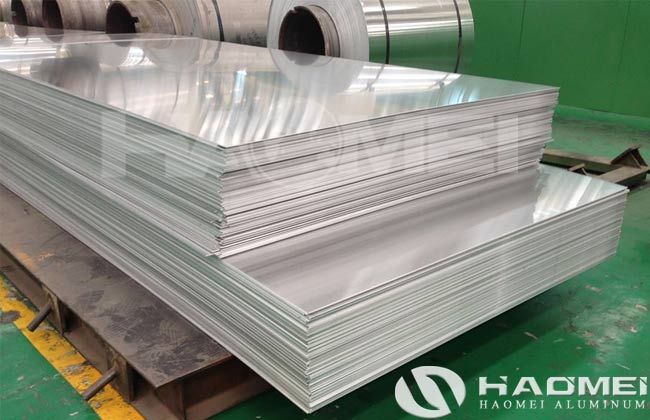The aluminium sheet load-bearing capacity depends on several factors, including the type of aluminum alloy, thickness, dimensions, support method and load type and distribution. Generally speaking, aluminum alloys offer high strength and low weight, making them widely used in many structural applications.
1. Core Influencing Factors
- Material (Aluminum alloy type)
Pure aluminium sheets (such as 1060) have low strength, while aluminum alloys (such as 6061 and 7075) significantly increase their strength through alloying (with magnesium, silicon, zinc, etc.). For example:
Pure aluminum has a tensile strength of approximately 90-120 MPa;
6061-T6 aluminum alloy has a tensile strength of 260-310 MPa;
7075-T6 (a high-strength alloy) has a tensile strength of 500-570 MPa, approaching that of some mild steels.
- Thickness and Cross-Sectional Shape
For the same material, greater thickness results in greater load-bearing capacity (although the relationship is not linear). For example, comparing a 1mm pure aluminum sheet with a 5mm 6061 aluminum plate, the latter's load-bearing capacity may differ by more than 10 times.
Cross-sectional shape has a greater impact: Flat aluminium sheets are less load-bearing (easily bend), while aluminum profiles (such as square tubes, channel aluminum, and I-beams) have a much higher load-bearing capacity due to their structural mechanics (similar to the principle that "I-beams bear more weight than steel plates").
- Load-bearing Mode and Span
Static load-bearing (e.g., a stationary object) is more stable than dynamic load-bearing (e.g., vibration and impact).
The smaller the span, the greater the load-bearing capacity. For example, a 5mm 6061 flat aluminum plate with a 10cm span may be able to bear 50kg, but with a 1m span, it may only be able to bear 5kg (due to excessive deflection, i.e., excessive bending).
- Support Conditions
Fixed on all sides (e.g., embedded in a frame) has a load-bearing capacity 2-3 times higher than simply supported on both ends (e.g., resting on two supports).

2. Common Scenarios
- Thin aluminum sheet (0.5-2mm, pure aluminum or 3-series alloy)
Mainly used for decoration and exterior casings, it can support approximately 1-5kg at a static small span (<30cm). Excessive force will cause noticeable bending.
- Medium-thick aluminum sheet (3-10mm, 6-series alloy)
Used for structural components, it can support approximately 10-50kg at a 50cm span. When the span is reduced to 20cm, it can support up to 50-150kg (without noticeable deformation).
- Aluminum profiles (such as industrial aluminum profiles, with a wall thickness of 1-3mm and cross-sections ranging from 30×30mm to 100×100mm)
Due to their cross-sectional design, their load-bearing capacity is significantly improved:
A 30×30mm profile (6063-T5) can bear 50-100kg at a 1m span;
A 100×100mm profile can bear 500-1000kg at a 1m span (with appropriate support).
- High-strength aluminum alloy plates (such as 7075, with a thickness of 10mm or more)
Used in aviation and machinery, they can bear hundreds of kilograms in small spans (<50cm), even approaching the level of mild steel plates.
Aluminium sheets' combined advantages of "lightweight, high strength, and corrosion resistance" in load-bearing applications make them irreplaceable among many materials, especially in weight- and durability-sensitive applications.
live:onlinehcx